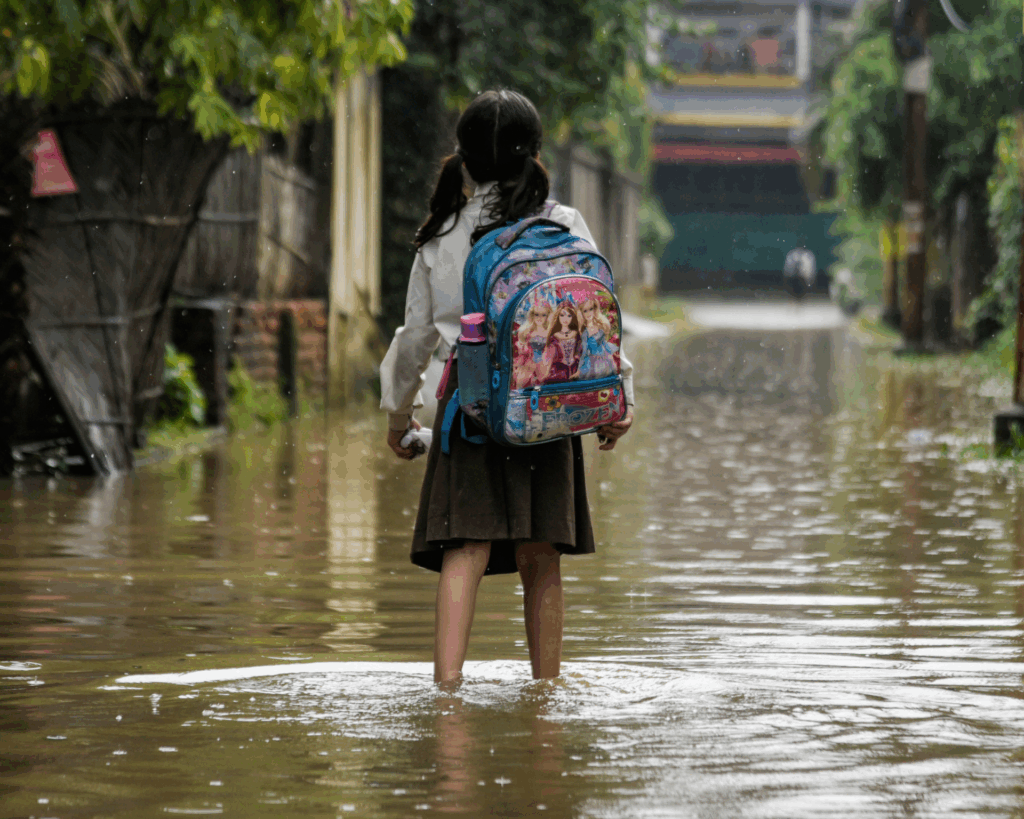Protections from Pollution
Waste water contaminated by fecal matter is regularly discharged into California's coastal waters, and current efforts to prevent exposure are insufficient.

Read Time: 3 minutes
Published:
The beautiful California beaches attract 23 million residents and 150 million tourist visits each year. As we enjoy the blue water and fresh breeze, it may not occur to us that not far from the beach, waste water contaminated by fecal matter is regularly discharged into the coastal water. Our research team found that fecal contaminants in California coastal waters lead to 3.56 million sick leave days per year. This translates to $341 million in forgone income using the current $12 minimum hourly wage.
Large volumes of treated sewage and untreated runoff water are discharged into California beach waters daily. The runoff water is often contaminated by fecal matter from human and animals as it travels through residential areas and flows into the California coastal water through storm drains. Many of these discharge locations are adjacent to frequently visited California beaches. Typically invisible to the naked eye, fecal contaminants in marine waters can lead to vomiting, diarrhea, gastroenteritis, respiratory disease, and eye and ear infections.
According to the California State Legislation Assembly Bill 411 (AB 411) and the California Code of Regulations (CCR), swimming beaches are required to be monitored for multiple fecal bacteria. When bacteria concentration surpasses the safe thresholds, warnings are posted to thwart the public from making contact with polluted coastal water.
We advocate stronger enforcement by more efficient communication of pollution advisories and about the health effects of beach pollution.
Is the CCR-defined safety level of exposure safe enough? Recently, it suffered a great deal of controversy. The scientific reference behind the CCR policy is a 1950s study that argued 400 fecal coliforms per 100 milliliters is sickness-inducing. The study was described as “far from definitive” by US Environmental Protection Agency. However, CCR took the research result and arbitrarily cut it in half to 200 fecal coliforms per 100 milliliters. They then interpolated comparable safety levels on other fecal bacteria, all without further experiments. So we were surprised to find that the CCR safety level is reasonably well-defined. Empirical data indicate that the current threshold is in the vicinity of the optimal level.
We also found that under the current CCR safety level, an average beach in California is deemed polluted more than 10% of the time. This implies that, given sufficient public warning to avoid swimming on high-pollution days, very few people should get sick when warning thresholds are exceeded. However, this assumption was not borne out by the empirical data. Our findings suggest that beach pollution warnings were either not noticed by visitors or ignored.
From a policy perspective, current efforts to prevent fecal matter exposure in coastal waters are insufficient. We advocate stronger enforcement by more efficient communication of pollution advisories and about the health effects of beach pollution. For example, sending beach pollution information to potential beach visitors based on their geolocation or web searches could be much more effective than expecting them to consult the county public health website. Similar methods are used when wildfires occur, and beach pollution information should be treated with equal urgency. Closing the beach down completely during polluted days is another alternative worth evaluating. In addition, county public health agencies could distribute factsheets on the dangers of polluted beach waters to residents in coastal areas.
Photo by Scott Trento on Unsplash




